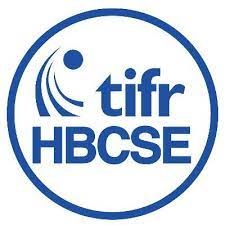
| Institute | Homi Bhabha Centre For Science Education [HBCSE-TIFR] |
| Olympiad | Indian National Astronomy Olympiad [INAO] |
| Download | Past Papers/Sample Question Papers |
| Years | 2018 to 2021 |
| Document Type | |
| Official Website | https://olympiads.hbcse.tifr.res.in/ |
HBCSE-TIFR INAO Olympiad Question Paper
Download Homi Bhabha Centre For Science Education [HBCSE-TIFR], Indian National Astronomy Olympiad [INAO] Past Papers and Sample Question Papers Online
Download HBCSE-TIFR INAO Olympiad Question Paper
| Olympiad | Question Paper |
| INAO 2021 | Download Here |
| INAO 2020 | Download Here |
| INAO 2019 | Download Here |
| INAO 2018 | Download Here |
HBCSE-TIFR INAO Olympiad Sample Questions
1. A Newtonian reflector type of telescope has a concave mirror with a 2.00 m radius of curvature as its primary mirror. It is fitted with camera at primary focus with an achromatic camera lens of 4.00 cm focal length.
(a) (2 marks) What is the angular magnification of this system?
(b) (3 marks) We observe a 25 000 km diameter sunspot with this system. What will be the angular size of the sunspot in the image?
(c) (7 marks) The camera lens is now removed and an image detector is placed in such a way that a well-focused sunspot image due to primary mirror could be observed with yellow light (wavelength 550 nm). We wish to observe the same region now in green light (wavelength 465 nm). For this, we introduce a green filter, which blocks all other wavelengths except green light, in front of the detector. If the thickness of this plane parallel glass plate (refractive index 1.53 ) is t = 2.887 mm, how much will be the change in the position of the image?
2. A rectangular sheet of paper was rolled to form a cylinder, with exactly two layers of sheet along the curved surface. This cylinder is cut such that the plane of the cut makes an angle of 45◦ with the axis of cylinder. The paper was then unrolled and spread on a flat table.
(a) (2 marks) Draw a figure to show how the unrolled paper would appear.
(b) (4 marks) Justify your answer with appropriate mathematical arguments.
3. Betelgeuse, a red supergiant star, in the constellation of Orion, is known as an irregular variable star. It’s magnitude varies between +0.3 to +1.0 from time to time. However, last year the astronomers were surprised to observe an unexpected dimming of Betelgeuse. We may assume this event started from 12 October 2019. Given below is a plot of the observed magnitude vs time (light-curve) of Betelgeuse.
Notes:
The relation between magnitude of the star and light flux received from it is given by : m1 − m2 = −2.5 log10 (F1/F2) where m1 and m2 are magnitudes measured in two different observations and F1 and F2 are corresponding light fluxes.
• Mass of Betelgeuse: MB = 2.1 × 1031 kg
• Distance of Betelgeuse from the Earth: dB = 200 pc
• Typical radius of Betelgeuse: R1 = 6.17 × 1011 m
(a) (8 marks) One of the proposed model for this dimming was that the whole star suddenly started expanding and hence cooled down. Let us assume that the star is still acting as perfect black body at each stage of expansion (and subsequent contraction). By other measurements, we know that the star’s effective temperature at the start of expansion was T1 = 3500 K and the effective temperature at the most expanded state is T2 = 2625 K. Find the average velocity of the expansion of gas.
(b) (9 marks) Some other astronomers proposed that the said dimming is caused due to the transit of a giant exoplanet with radius ‘r’ orbiting Betelgeuse. Argue if such a scenario is possible for an edge-on circular orbit of the exoplanet with orbital radius ‘a’.
Have a question? Please feel free to reach out by leaving a comment below
![HBCSE TIFR Indian National Biology Olympiad [INBO] Question Papers HBCSE-TIFR-Logo](https://www.recruitmentzones.in/wp-content/uploads/2022/10/HBCSE-TIFR-Logo-150x150.jpg)
![Indian Talent International Science Olympiad [ISO] Sample Papers Indian-Talent-Logo](https://www.recruitmentzones.in/wp-content/uploads/2023/08/Indian-Talent-Logo-150x141.jpg)